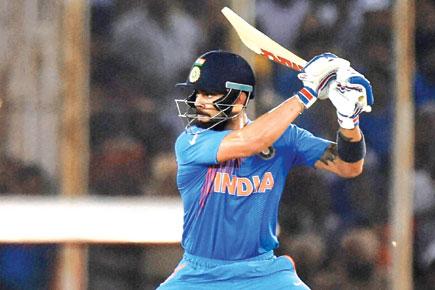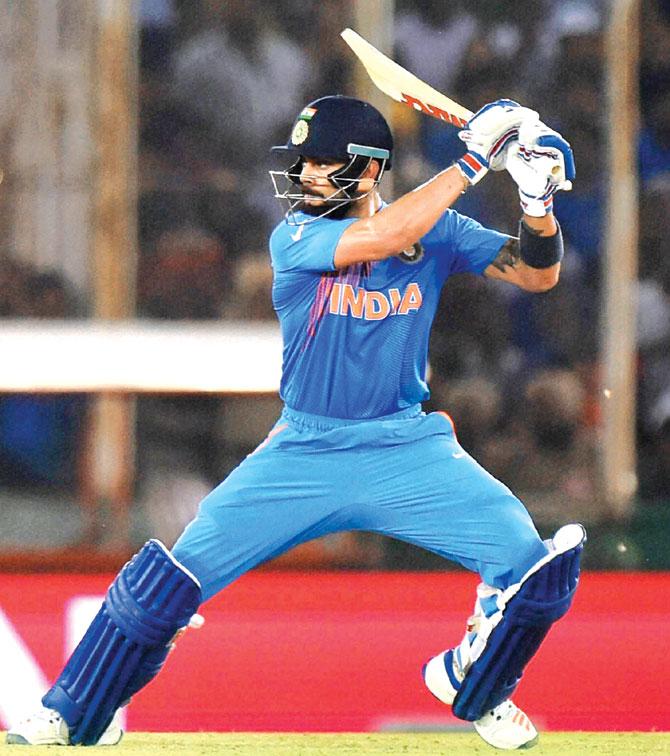I'd like to see international cricket return to boundary fences in order to even up contest between bat and ball. Players would quickly adapt to change from boundary ropes and it would mean all sixes were of genuine variety, writes Chappell

Virat Kohli
Sydney: The breathtaking finish to the World T20 tournament was an assault, that as much as Ben Stokes would like to erase it from his memory bank, no one who saw it will ever forget.

Virat Kohli
ADVERTISEMENT
Carlos Brathwaite's four mammoth consecutive sixes to win a world title in the final over was an incredible achievement and a reflection of the West Indies' approach to T20 cricket. Where other teams studiously tried to avoid dot balls, the Windies considered them irrelevant and negated their supposed deleterious effect by regularly drilling the ball over the boundary.
If, as tends to happen in sport, this leads to other teams following the West Indies T20 example, there'll be an even bigger explosion in six-hitting. The increase in the rate of sixes in the Super Ten section of the last two tournaments is marked: In 2016 they occurred every 21 balls compared with every 24 in 2014, which equates to virtually an extra six every innings.
It's worth contrasting Brathwaite's crunching climax with other moments of drama and high tension during the tournament. These included Bangladesh's last over meltdown against India and Virat Kohli's skilful and daring pursuit of Australia's challenging target in a must win game.
The first one was a rarity because it involved a bowler - Hardik Pandya — prevailing in a final over death or glory shootout. The latter effort was a brilliant combination of deft placement and amazing athleticism. The daring running between wickets of Kohli and MS Dhoni was every bit as exciting as the former's ability to find the boundary with the accuracy of a theodolite.
Kohli's innings was breathtaking but it was also a wonderful example of everything that is good about batting; he was artistic and his athleticism challenged the opposition's fielding skills.
The dramatic contrast between this prolonged, spell-binding innings and Brathwaite's brutal but swift dismantling of Stokes, provides necessary light and shade to the T20 game. If the players and administrators fall head-over-heels in love with six-hitting, the game will become a flat-bat, bouncing ball version of baseball in the 1990's.
Baseball connection
Throughout that era the American game worshipped at the home run altar (baseball's equivalent of cricket's six) during a period when Performance Enhancing Drugs (PED's) dominated the scene. Partly as a result of PED's, baseball became power oriented rather than what it should be; a contest involving strategic hitting, crafty pitching, good defense and speed.

West Indies cricketer Ramnaresh Sarwan unsuccessfully dives to stop a boundary by New Zealand's captain Stephen Fleming during the 2007 ICC World Cup at the Sir Vivian Richards Stadium in St John's, Antigua. Pic/AFP
Baseball has since cleaned up its act and is returning to more of the all-round contest it was designed to be. There's another aspect of baseball that's worth noting when considering T20's future; the boundaries. These are a moveable feast in baseball and can be adjusted to keep the contest between hitter and pitcher fairly even.
There's been a tendency — hard to fathom in an era of improved bats — to reduce the boundaries in cricket, especially the T20 version. It's often done under the guise of player safety — so they don't get injured crashing into the fence — which doesn't add up when advertising signs, large speakers and cameras and tripods litter the space just beyond the boundary rope.
Go back to fences
I often wonder if the reduction in boundaries has more to do with increasing the number of sixes in order to titillate the fans, rather than any major concern for player safety. It's interesting that baseball, where players are much more richly rewarded than even the highest paid IPL cricketers, feels comfortable with a five-metre wide warning track to indicate to out-fielders that the home run fence is looming.
I'd like to see international cricket return to boundary fences in order to even up the contest between bat and ball. Players would quickly adapt to the change from boundary ropes and it would mean all sixes were of the genuine
variety.
Many cricketers, especially when it comes to power-hitting and fielding, have adopted some of baseball's techniques. It wouldn't do the administrators any harm to also take note of some of baseball's smarter moves.
 Subscribe today by clicking the link and stay updated with the latest news!" Click here!
Subscribe today by clicking the link and stay updated with the latest news!" Click here!







